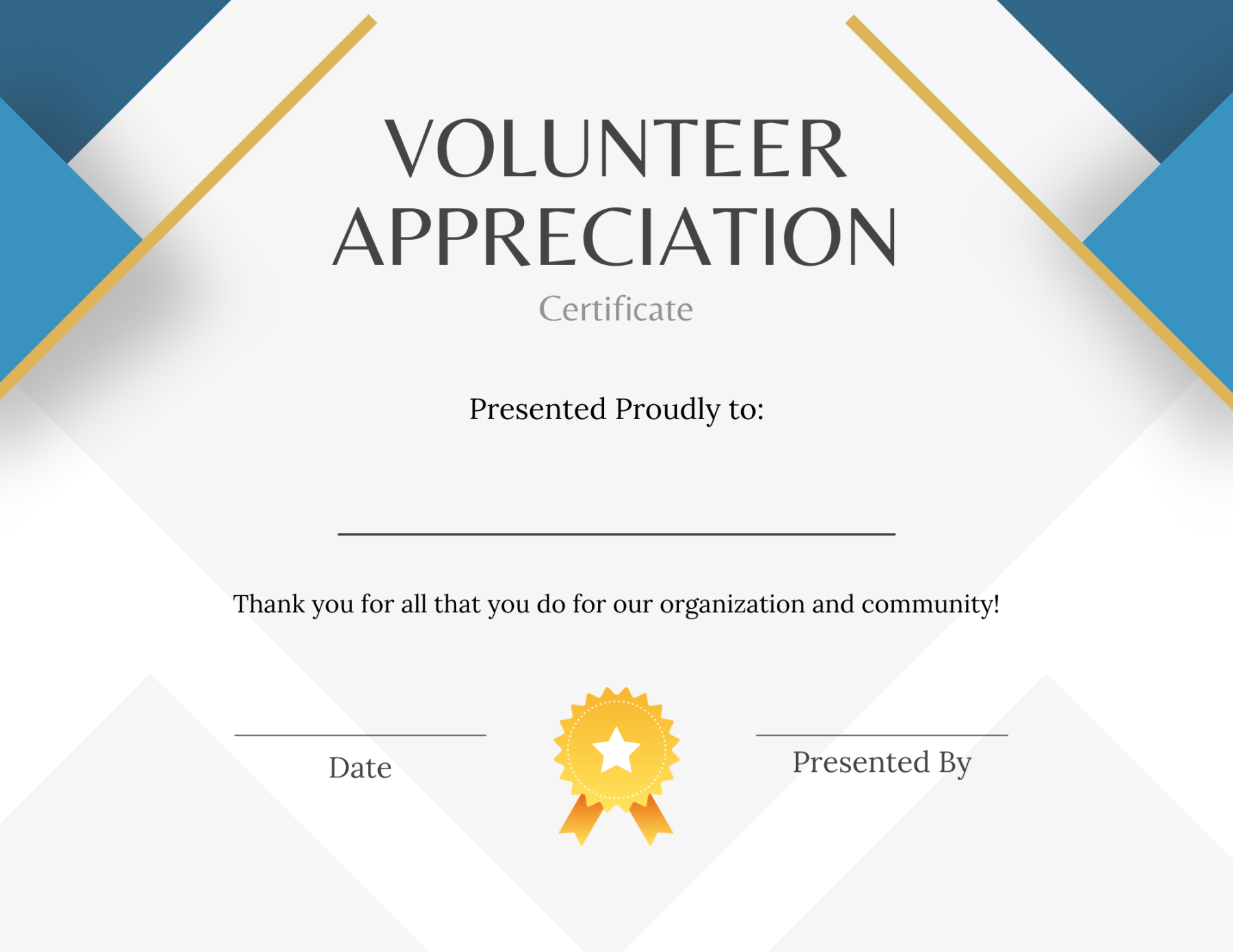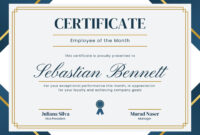Essential Design Elements for Professionalism and Trust
A volunteer Certificate is a tangible recognition of an individual’s contribution to a cause or organization. It serves as a testament to their dedication and efforts. To create a volunteer certificate that effectively conveys professionalism and trust, it is essential to carefully consider the design elements that will be incorporated.

Typography
The choice of typography plays a crucial role in establishing the tone and professionalism of a volunteer certificate. Opt for fonts that are clean, legible, and easily recognizable. Serif fonts, such as Times New Roman or Garamond, often exude a sense of tradition and formality, while sans-serif fonts like Arial or Helvetica offer a more modern and contemporary aesthetic.
Ensure that the font size is appropriate for the certificate’s dimensions. The text should be large enough to read easily but not so large that it overwhelms the design. Consider using different font sizes and weights to create a hierarchy of information, highlighting the most important elements.
Color Scheme
The color scheme of a volunteer certificate can significantly impact its overall appearance and perception. Choose colors that are visually appealing and evoke the desired emotions. A limited palette of colors can create a sense of harmony and sophistication.
Consider the organization’s branding guidelines when selecting colors. If applicable, incorporate the organization’s primary colors into the certificate design to maintain consistency and reinforce brand identity.
Layout and Composition
The layout and composition of a volunteer certificate should be well-balanced and visually pleasing. The arrangement of elements should be logical and easy to follow.
Use white space effectively to create a sense of airiness and readability. Avoid overcrowding the certificate with too much text or imagery.
Consider using a grid system to guide the placement of elements. A grid can help ensure that the design is consistent and visually appealing.
Imagery
Imagery can add a personal touch to a volunteer certificate and enhance its visual appeal. However, it is essential to use images that are relevant and high-quality.
Avoid using generic or overly stocky images. Instead, opt for images that are specific to the organization or the volunteer’s role. If possible, use photographs of the volunteer or the organization’s activities.
Personalization
Personalization is key to creating a meaningful and impactful volunteer certificate. Include the volunteer’s name, the organization’s name, the volunteer’s role or position, and the dates of service.
Consider adding a personalized message or quote that acknowledges the volunteer’s contributions and expresses gratitude. This can make the certificate feel more special and appreciated.
Signature and Seal
A signature and seal can add a sense of authenticity and authority to a volunteer certificate. The signature should be clear and legible, preferably in pen or ink.
If applicable, include the organization’s seal or logo. This can help reinforce the certificate’s credibility and association with the organization.
Border and Frame
A border or frame can help define the certificate’s boundaries and create a sense of enclosure. Choose a border or frame that complements the overall design and adds a touch of elegance.
Consider using a decorative border or frame that is relevant to the organization’s mission or the volunteer’s role. This can add a unique and personalized element to the certificate.
Printing and Materials
The quality of the printing and materials used for the volunteer certificate will significantly impact its perceived value and professionalism. Choose a high-quality printer that can produce crisp and vibrant colors.
Consider using a premium paper stock, such as a heavy-weight vellum or a textured paper, to give the certificate a luxurious feel.
Conclusion
By carefully considering these design elements, you can create a professional and impactful volunteer certificate that effectively recognizes and celebrates the contributions of your volunteers. A well-designed certificate serves as a valuable keepsake and a source of pride for the recipient.


![Best Certificate Of Employment Samples [Free] ᐅ TemplateLab](https://ashfordhousewicklow.com/wp-content/uploads/2024/09/best-certificate-of-employment-samples-free-templatelab_1-200x135.jpg)